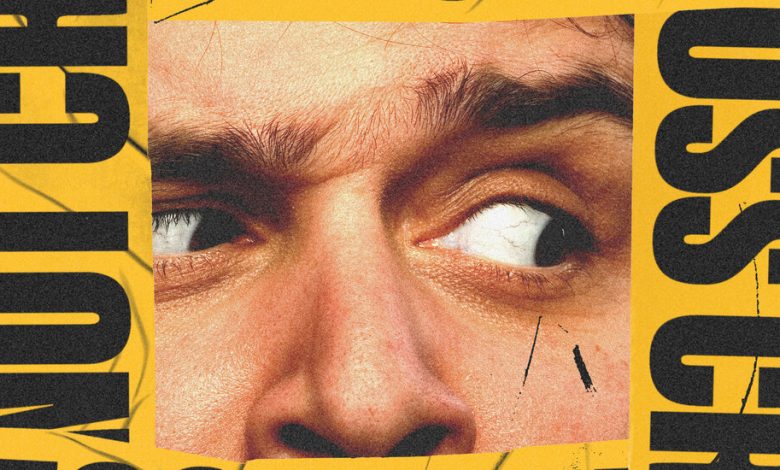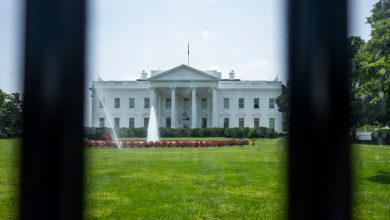Is Fear of Crime a Self-Fulfilling Prophecy?

Violent crime — homicides, robberies, gun assaults — has begun to fall from pandemic-era levels. But people are scared. According to the Pew Research Center, almost 60 percent of Americans today say that violent crime is a “very big problem.” In New York State, four out of ten residents tell pollsters they’ve “never been this worried about my personal safety.”
Republican politicians have been amping up these fears, blaming the violence on soft-on-crime policies and the “defund the police” movement, which they accuse Democrats of supporting. Democratic politicians have been pointing out that crime rates are actually low, relative to their peak in the early 1990s.
Yet social scientists have long been aware of a paradox that doesn’t fit well with either narrative: Fear of crime itself may make public safety worse.
Consider guns. The desire for protection is one of the main reasons people buy them. Yet having a gun around not only increases the risk of suicide and accidental shootings, it can also contribute to a community’s crime problems.
The economist Stephen Billings looked at residents of Charlotte, N.C. and the surrounding county who received concealed-carry permits. He found that during the year he tracked them, people who had a permit were no less likely to be victims of violent crime than people who didn’t have one. But the concealed carriers were substantially more likely to report being the victim of a property crime — and what the criminals often took was one of their guns.
Stolen guns are sometimes trafficked out of state, but more commonly circulate locally, where they may be used to commit additional offenses. As a result, each concealed-carry permit increased the violent crime rate in the neighborhood by about 2 percent. (Dr. Billings noted that if the owners had simply practiced better gun safety, such an increase would have blunted.) Guns that wind up in the wrong hands also make crime more lethal.
Because of the combination of permissive legislation, recent court rulings that undercut gun control, and aggressive manufacturing and marketing, firearms are easier to come by than ever. If fear of crime leads more people to get guns, and some of those guns are then stolen, increasing violence and creating more fear, a vicious cycle could ensue. Even if this cycle doesn’t lead to a major uptick in the overall rate of crime, it can create a floor below which crime rates wouldn’t fall — as Charlotte and other cities may be experiencing now, primarily because of guns that were stolen from cars.
Fear can also make crime more likely by fraying the social and economic fabric. Decades of social science research shows that people tend to overestimate their chances of becoming victims, that they may wrongly infer that an area is dangerous from seeing individuals engage in disorderly behavior, and that fear of crime sometimes reflects underlying racial or ethnic prejudice. In a classic 1986 essay, the political scientist Wesley Skogan argued that when people become afraid of criminal activity in a neighborhood for these or other reasons, conditions can rapidly worsen.
People who are scared might stop socializing as much with their neighbors. They might become less active in houses of worship or as volunteers with civic organizations, sapping the strength of vital neighborhood institutions. They may no longer feel safe banding together to urge troublemakers on the street to move along, abandoning the informal social control necessary to keep further crime in check.
And as people become reluctant to shop or work in an area, retail stores will close and manufacturers and offices will relocate. With less legal income flowing into the community, illicit markets grow, bringing more theft, drugs and violence.
Dr. Skogan’s focus was residential neighborhoods, but those lessons are directly relevant to downtown areas, too — especially right now. Hanna Love and Tracy Hadden Loh of the Brookings Institution wrote this spring on the situation facing downtowns in New York, Chicago, Philadelphia and Seattle. In all four cities, downtown districts haven’t fully recovered from the pandemic, when many office workers went remote. Office vacancy rates remain high and businesses that serve office workers are languishing or have shut down. Meanwhile, individuals struggling with homelessness, visible mental illness or addiction seem more numerous, and accounts of theft and violence abound.
In interviews the researchers conducted with business owners, commuters, downtown residents and public officials, concerns about crime were top of mind, cited as the main factor “stopping workers from coming back to the office.” Yet when Ms. Love and Dr. Loh examined crime statistics in these cities, they found a mismatch. Though citywide crime rates had gone up, most of the increase had occurred in disadvantaged residential areas. Downtowns were less affected than people believed.
What’s more, a disturbing pattern was emerging. Calls were mounting for cities to direct resources, including law enforcement and social services, toward business districts as a way to revive them. But those resources alone wouldn’t do it — and diverting them from the parts of the city where they were needed most would make a difficult situation in those areas worse.
Finally, when people are scared of crime, politicians pressure the police to crack down. Contrary to what some progressives think, increasing the police presence in an area does tend to lower the crime rate. But indiscriminate, heavy-handed crackdowns — reliance on blanket stop-and-frisk tactics, for example — erode community trust, hampering police officers’ ability to conduct investigations. Crimes go unsolved and criminals remain free to strike again.
Perhaps counterintuitively, research shows that surging police patrols may increase fear of crime: Residents take them as a signal that the danger must be really severe. In addition, last year about half of Black Americans said they would rather be robbed or burglarized than have unprovoked contact with the police, according to one study. Both facts could explain why in New York, where Mayor Eric Adams beefed up police patrols on the subway, many riders continue to express fears even as transit crimes in most categories have dipped to prepandemic levels.
The solution to all this is not to keep insisting that crime isn’t as bad as people think. Fear doesn’t respond well to data. Besides, while over-the-top fears may not be justified in most cases, the public safety situation in the United States does warrant concern.
There are no easy fixes, but it’s hard to see a meaningful response to crime that doesn’t include strengthening the social safety net, increasing the certainty of punishment for serious offenses, working toward common-sense gun control, and helping individuals and families cope with trauma and other mental health challenges. To bolster trust, we also need to improve policing, focusing as much on changing the culture of the occupation as on imposing stricter laws and policies.
Beyond that, one of the best things that cities can do to reduce fear is to increase social connections among residents. Studies show that the more ties people have to one another in their communities, the less fearful they are of becoming crime victims, perhaps because they know they can count on others for protection and support, or because other people may keep our fears in perspective. While fear can chip away at those ties, government, nonprofits and the private sector can all play a role in fortifying what the sociologist Eric Klinenberg has called the “social infrastructure” of cities. Community centers, recreational facilities, libraries, cultural events and neighborhood organizations connect us to one another, making everyday life feel a little less scary.
Neil Gross, a professor of sociology at Colby College, is the author, most recently, of “Walk the Walk: How Three Police Chiefs Defied the Odds and Changed Cop Culture.”
Source images by twohumans and MirageC/Getty Images.
The Times is committed to publishing a diversity of letters to the editor. We’d like to hear what you think about this or any of our articles. Here are some tips. And here’s our email: [email protected].
Follow The New York Times Opinion section on Facebook, Twitter (@NYTopinion) and Instagram.




